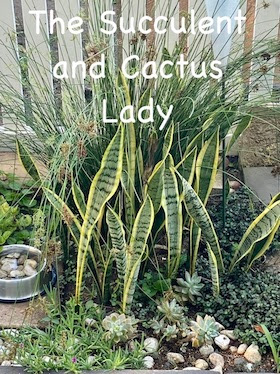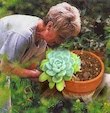Aloe ferox youngsters in my garden having survived another winter
Have you ever jumped the gun and then regretted it afterwards? Well, that's what happened to me! A couple of months ago we were in the process of selling our smallholding, something we've been thinking of for a couple of years now, planning retirement and all that, and apart from having to have a massive clean-up of all the stuff one accumulates over 38 years of living in one place, one of my biggest worries was all my succulents - those in the garden were OK, but I had dozens of succulents and cacti in pots and it was impossible for me to take all of them with me. After a short search I was lucky and blessed enough to find another succulent-lover who was thrilled to take all of them off my hands.
Now, here's the thing - the sale fell through! (Much to my relief, I must say, as in the process of selling we suddenly realised what we are leaving behind and we fell in love with our life and our smallholding all over again! One doesn't realise what you have until you lose it, or almost lose it, right?)
This new planting was just coming along nicely and the Aeoniums on the left were some of my favourites.
This Echeveria elegans was also just starting to flower for the first time in in about the 4 years I had it
Another first, this Haworthia cooperii var Transiensis was also pushing up it's first tiny little flowers
My only consolation is that I still have a few succulents and cacti left in the garden and it would be easy to take cuttings and start a new collection. But here's the question : do I want to start another potted collection again? At first, after they were all gone, I felt empty and lost, no daily routine of checking up on all of them, spotting new growth and new flowers and softly chatting to each and every one. All their small watering cans are standing empty, calling out for something to water.
But on the other hand, it's also very liberating to not constantly be worried about them and rushing outside to bring them under cover every time it starts hailing. So, for now, I'll be chatting to all my succulents and cacti in the ground in the garden, checking on them daily and giving them some special attention!
























































